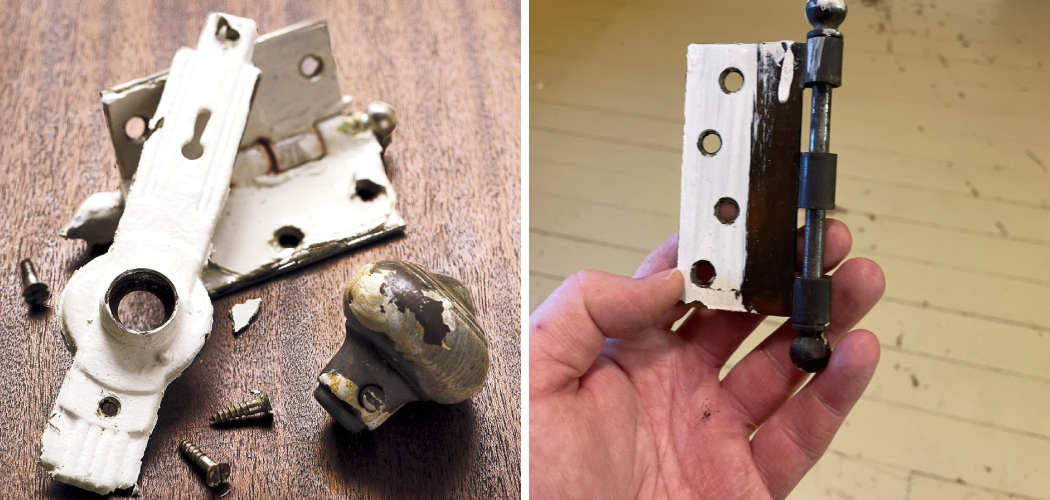Removing paint from hardware, whether it’s doorknobs, hinges, or handles, is an essential task in restoring the original beauty and functionality of these pieces. Over time, hardware can accumulate layers of paint from multiple repainting projects, diminishing its appearance and hindering its performance. The process of getting paint off hardware involves several careful steps to ensure the underlying material is not damaged. Various methods can be employed, ranging from chemical paint removers to natural solutions like vinegar or baking soda. Additionally, mechanical techniques such as scraping or using a wire brush can be effective, especially for stubborn paint.
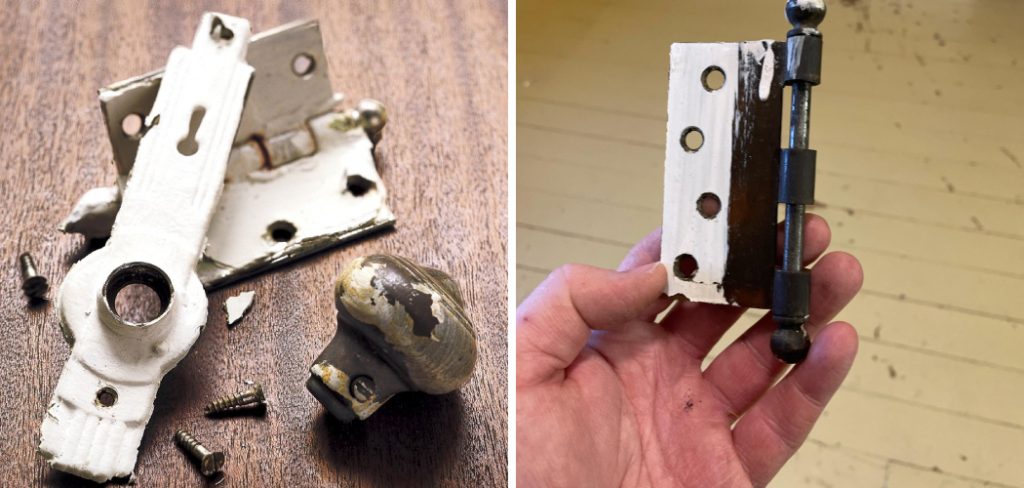
Each method requires specific tools and a thoughtful approach to avoid scratching or tarnishing the hardware. This guide will explore the best practices and step-by-step instructions for how to get paint off hardware, allowing you to restore their original finish and enhance the overall look of your fixtures. Whether you’re dealing with antique brass or modern stainless steel, you’ll find tailored solutions to meet your needs and ensure a pristine result.
10 Methods How to Get Paint off Hardware
1. Soaking in Hot Water
One of the simplest and most effective methods for removing paint from hardware is soaking it in hot water. Fill a pot with water and bring it to a boil. Once the water is boiling, turn off the heat and carefully place the hardware into the pot. Allow the hardware to soak for several hours or overnight. The heat and moisture will soften the paint, making it easier to remove. After soaking, use a plastic scraper or a soft-bristled brush to gently scrape off the loosened paint. This method is particularly effective for water-based paints and is safe for most metal hardware.
2. Using a Crockpot
If you have an old crockpot that you no longer use for cooking, it can be repurposed for removing paint from hardware. Fill the crockpot with water and add a few tablespoons of liquid dish soap. Place the hardware in the crockpot and set it on a low heat setting. Allow the hardware to soak in the soapy water for several hours. The combination of heat and soap will help loosen the paint. After soaking, use a soft brush or cloth to scrub off the softened paint. This method is gentle and effective, making it ideal for delicate or antique hardware.
3. Applying Chemical Paint Removers
Chemical paint removers are a powerful option for removing paint from hardware. Choose a paint remover specifically designed for metal surfaces. Apply the remover to the hardware using a brush or cloth, following the manufacturer’s instructions. Allow the chemical to sit for the recommended amount of time, usually 15-30 minutes. The paint remover will break down the paint, making it easy to wipe or scrape off. Be sure to wear protective gloves and work in a well-ventilated area when using chemical paint removers. Rinse the hardware thoroughly with water and dry it completely after the paint is removed.
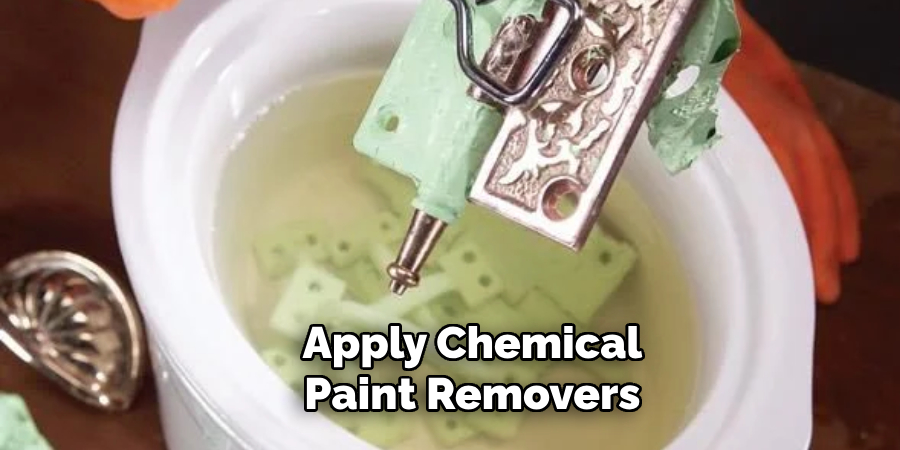
4. Using a Heat Gun
A heat gun can be an effective tool for removing paint from hardware. The high temperature of the heat gun softens the paint, making it easier to scrape off. Hold the heat gun about 6-8 inches away from the hardware and move it back and forth to evenly heat the paint. Once the paint starts to bubble and peel, use a plastic scraper to gently remove it. Be careful not to overheat the hardware, as excessive heat can damage the metal or cause burns. This method is particularly useful for removing thick layers of paint or old, stubborn paint.
5. Sandblasting
Sandblasting is a highly effective method for removing paint from hardware, especially for intricate or detailed pieces. This technique involves blasting the hardware with fine abrasive particles under high pressure, which strips away the paint. Sandblasting requires specialized equipment and protective gear, so it’s often best to have it done professionally. However, if you have access to a sandblaster and are experienced with its use, it can quickly and thoroughly remove paint from even the most complex hardware designs. Ensure the hardware is securely positioned and follow all safety protocols during the process.
6. Baking Soda and Water Boil
A simple and eco-friendly method for removing paint from hardware involves boiling it in a solution of water and baking soda. Fill a pot with water and add about a quarter cup of baking soda. Bring the water to a boil, then reduce the heat to a simmer and add the hardware. Let the hardware simmer for 20-30 minutes. The baking soda helps to break down the paint, making it easier to remove. After boiling, use tongs to carefully remove the hardware from the pot and scrape off the softened paint with a plastic scraper or brush. This method is safe for most metals and is particularly effective for small hardware pieces.
7. Vinegar and Water Soak
Vinegar is a natural and inexpensive option for removing paint from hardware. Mix equal parts white vinegar and water in a pot and bring it to a boil. Once boiling, reduce the heat and add the hardware. Allow it to soak for several hours or overnight. The acidity of the vinegar helps to dissolve the paint, making it easier to remove. After soaking, use a soft brush or cloth to scrub off the softened paint. Rinse the hardware with water and dry it thoroughly. This method is gentle and suitable for most types of metal hardware.
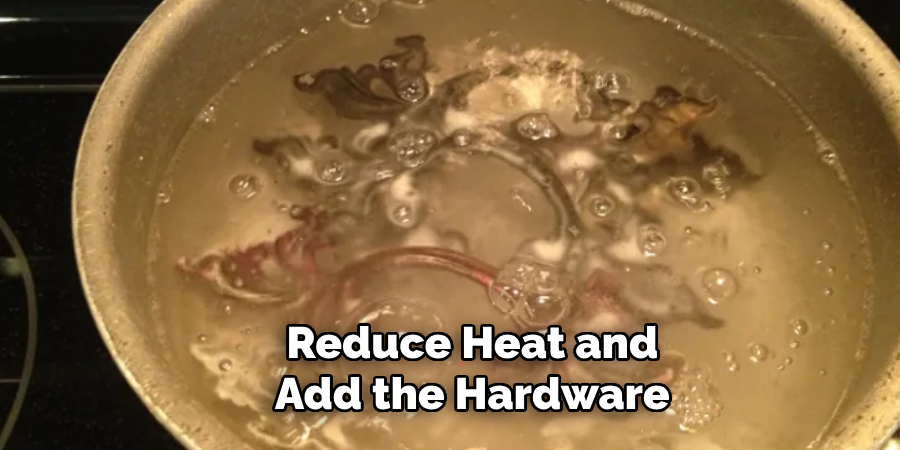
8. Using a Wire Brush
A wire brush can be an effective tool for manually removing paint from hardware. Choose a wire brush with bristles appropriate for the metal type to avoid scratching or damaging the hardware. Use the brush to scrub the paint, applying firm pressure to remove stubborn spots. This method is particularly useful for textured or ornate hardware where other tools may not reach. To enhance the effectiveness, combine this method with a chemical paint remover or a soaking technique. Always brush in the direction of the metal grain to minimize any potential damage.
9. Paint Stripper Gel
Paint stripper gel is a thicker alternative to liquid paint removers and can be particularly effective for vertical surfaces or detailed hardware. Apply a generous layer of paint stripper gel to the hardware using a brush. Allow the gel to sit for the recommended time, usually around 15-30 minutes, or until the paint begins to bubble and peel. Use a plastic scraper to gently remove the softened paint. Paint stripper gel clings to surfaces better than liquid removers, making it ideal for complex shapes and intricate details. Be sure to wear protective gloves and work in a well-ventilated area when using this product.
10. Using a Rotary Tool
A rotary tool with a wire brush attachment can be highly effective for removing paint from hardware, especially for intricate or detailed pieces. The rotary tool provides precise control and can reach into tight spaces and detailed areas that other methods may miss. Attach a wire brush to the rotary tool and gently run it over the paint-covered hardware. The high-speed rotation of the brush effectively removes paint, leaving the hardware clean and polished. This method is particularly useful for restoring antique or ornate hardware, as it allows for careful and detailed paint removal.
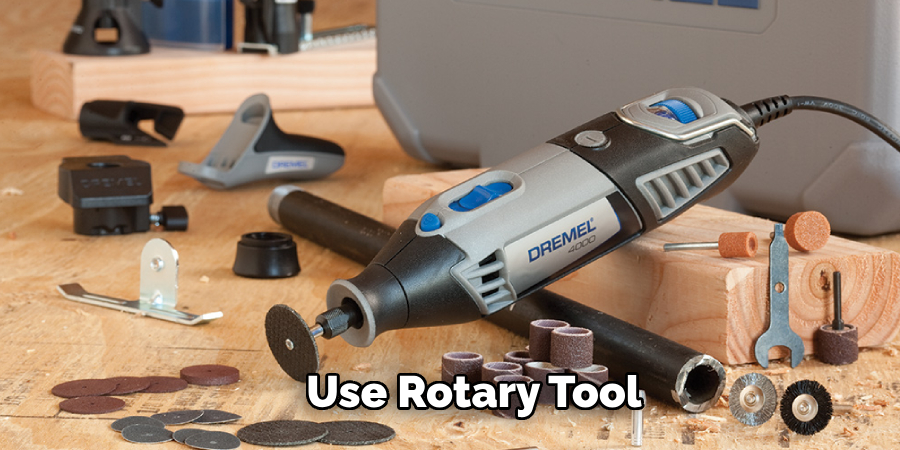
Things to Consider When Removing Paint from Hardware
When embarking on the task of removing paint from hardware, there are several important factors to consider to ensure the process is both safe and effective. First and foremost, always prioritise safety by wearing protective gear such as gloves, goggles, and a mask, especially when handling chemical paint removers or using tools that can emit particles. Next, assess the type of metal you are working with, as some methods may be too harsh and potentially damage softer metals. It’s also crucial to work in a well-ventilated area to avoid inhaling fumes, particularly when using chemicals or a heat gun.
Another consideration is the age and value of the hardware. Antique or delicate pieces require gentle methods such as soaking in vinegar or using a soft brush, while more robust, modern hardware can withstand more aggressive techniques like sandblasting or using a rotary tool. Additionally, the level of detail on the hardware will influence the method you choose; intricate designs may need precision tools to avoid damaging the intricacies.
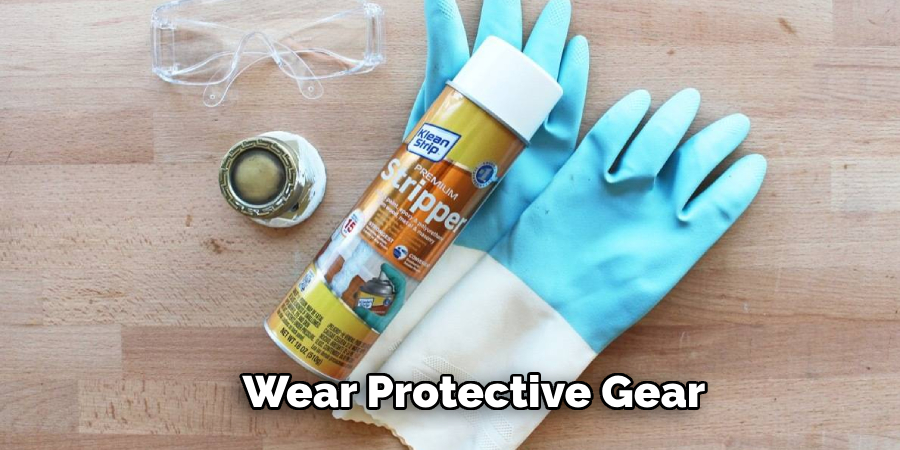
Conclusion
Removing paint from hardware can be a time-consuming task, but with the right methods, it is possible to restore the original beauty and functionality of your metal fixtures. The ten methods outlined—soaking in hot water, using a crockpot, applying chemical paint removers, using a heat gun, sandblasting, baking soda and water boil, vinegar and water soak, using a wire brush, paint stripper gel, and using a rotary tool—offer a comprehensive range of techniques for effectively removing paint from hardware.
Each method provides unique benefits and can be adapted to suit the specific needs of your hardware and the type of paint. Thanks for reading, and we hope this has given you some inspiration on how to get paint off hardware!
